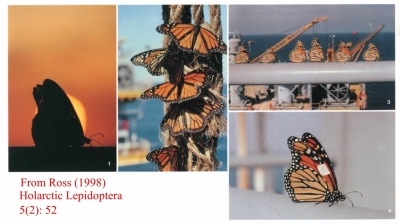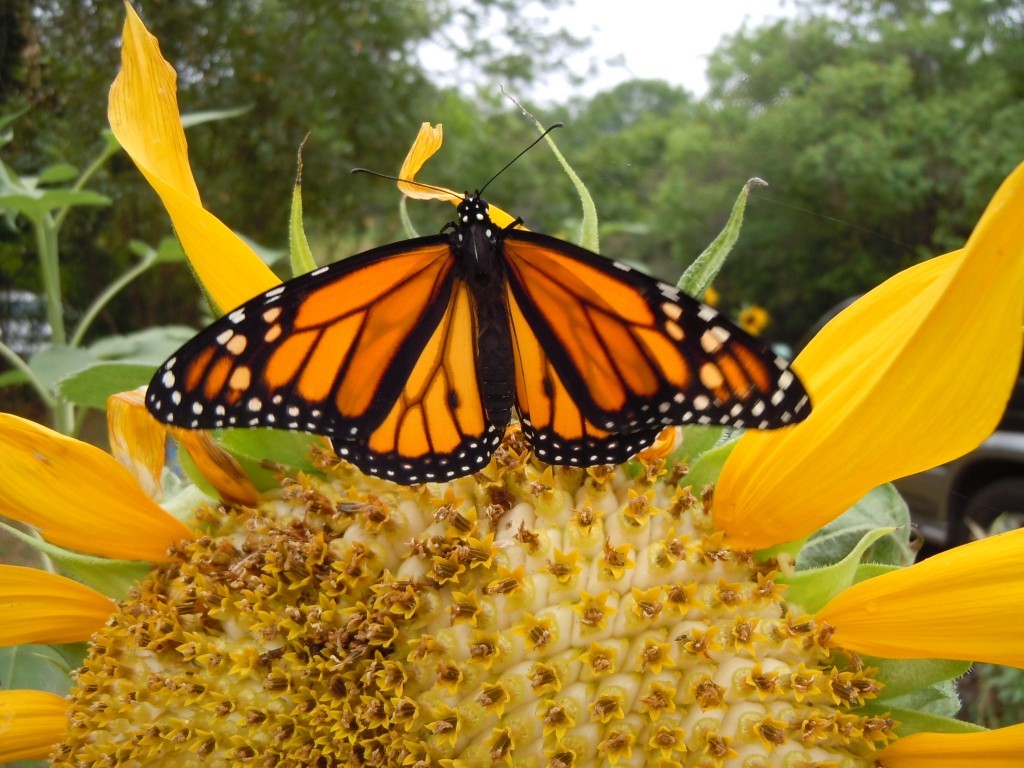 An app being developed by University of Texas Marine Science Institute scientist, Dr. Tracy Villareal, will harness the power of citizens to help collect data on the occurrence of monarch butterflies over the Gulf of Mexico during the migration. The project focuses on a new product for studying unique problems. The purpose is to understand how monarch butterflies use offshore oil platforms in the Gulf of Mexico and whether this is part of their migration.
An app being developed by University of Texas Marine Science Institute scientist, Dr. Tracy Villareal, will harness the power of citizens to help collect data on the occurrence of monarch butterflies over the Gulf of Mexico during the migration. The project focuses on a new product for studying unique problems. The purpose is to understand how monarch butterflies use offshore oil platforms in the Gulf of Mexico and whether this is part of their migration.
As part of their life cycle, monarch butterflies conduct an epic migration across North America using several complex compasses to steer them across 1000s of kilometers to their overwintering sites. Data collection on this scale is a challenge. Oil rigs are hard to get to, are scattered over the Gulf, and number over 4,000. Rather than trying to put a few, a happy few, observers on platforms to support Dr. Villareal's work, researchers are creating a mobile app that will permit offshore citizen scientists to record observations and help build a large database on the butterfly movements. This will compliment terrestrial observations compiled for years by the program Journey North. The monarch butterfly has declined in abundance considerably, and the only reports that document their offshore movement are decades old. In order to study this problem, the researchers are crowd sourcing to finish app development and engaging citizen science.
After the app is developed, citizens will soon be able to log locations of butterflies on boats and oil rigs throughout the Gulf of Mexico. The app development is being supported through a crowd-sourced fundraiser and by a major sponsor, Dr. Chip Taylor of Monarch Watch. Dr. Taylor plans to use the app for studying the mechanisms that monarchs use to migrate. Monarch Watch is one of the largest citizen science programs in the county that is tracks monarch butterflies. Monarch Watch brings a $4,000 match to the project.
How does the app work? It’s magic. The app is based on a reporting app for marine mammal observations and uses a module format where individual fields are linked to a cloud-based computing service. The user will activate the app, hit a few keys that indicate the number of monarchs, what they are doing, and point the phone in the direction they are flying. The software will grab the time, date, latitude / longitude, and compass heading. It will upload those to the cloud, grab some weather information from databases, and then log the reports on a map. Users can see their own records immediately. The project investigators can see all the data, and they are currently working on ways to make the larger data set accessible after including security considerations. What makes this app different is that it is designed from the ground up to be very fast and easy to use so that busy offshore workers will not be distracted by having to enter too many keystrokes. It’s dangerous work out there and Villareal does not want this to be considered a hazard itself!
Data generated from the app and potentially thousands of entries from interested citizens will tell the researchers the current state of the monarch butterfly migration offshore. It will also help researchers get a better handle on the population numbers of monarchs migrating. The data will assess whether these butterflies are actually moving directionally to Mexico, or whether this is just confused random motion that likely leads to them perishing offshore.
The app development is still looking for support from the general public. Interested parties can contribute at https://hornraiser.utexas.edu/marine-monarchs









